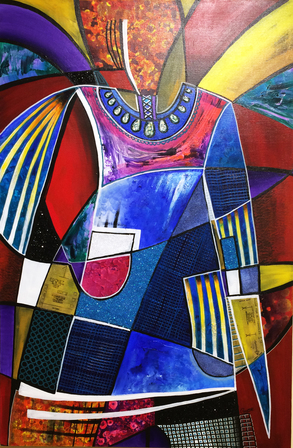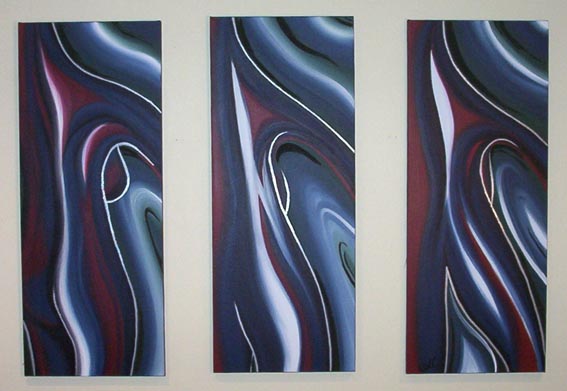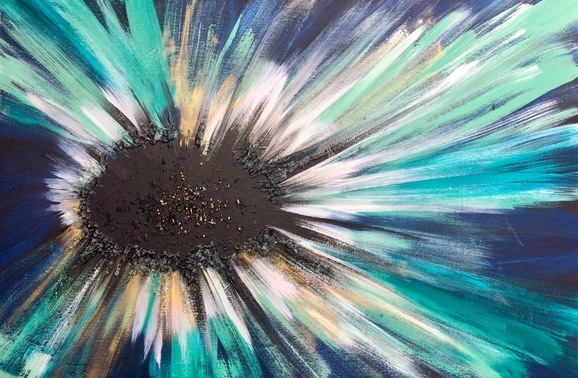The Fascinating World of Abstraction Art
The Intricacies of Abstract Art: More Complex Than It Seems
Many artists venture into the world of abstract art, often underestimating its complexity. It's not just a style, but a discipline that demands a deep level of skill, understanding, and technique to master. The respect for this art form grows as one digs deeper into its intricacies.
The Hidden Discipline in Abstract Art
Contrary to popular belief, abstract art isn't just about splashing paint on a canvas without any thought. It demands artistic discipline, and an intimate knowledge of painting techniques, with a profound understanding of the formal elements of art, such as colour, shape, form, and composition.
While abstract styles may appear free-flowing, the reality is that successful abstract work needs careful balance as well as cohesion.
Many artists who transition into abstraction often feel frustrated when their creations lack unity or purpose. They may start with the intention of expressing freedom but end up with what can feel like chaotic and disconnected results.
A Cautionary Tale: When Realism Meets Abstraction
I once encountered a realist artist who, disheartened by slow art sales, decided to give abstract art a go. She believed it would be easier and quicker to produce.
Unfortunately, the pieces she brought to my gallery were far from compelling, they were haphazard splashes of clashing colours without any coherent design or thoughtful form and she was scornful of other artists, saying abstract was simple and clearly had no respect for the style.
Abstract art isn't a quick-fix solution. It's not about simply stepping away from realism to make fast money. Instead, it's a journey that should involve the same level of consideration as any other form of painting.
Rushing into abstraction in your art, without understanding its principles can lead to messy, unappealing results, as my cautionary tale of the realist artist illustrates.
Transitioning Into Abstract Art: My Personal Journey
As an artist myself, when I made my own transition from realism to abstract painting, it was a personal journey filled with challenges. It required a bit of mental retraining, I had to shift how I saw the world, moving away from trying to replicate it to focusing on its more abstract elements. This journey is one that I think many artists can relate to.
True abstraction doesn't attempt to resemble anything in the real world. Instead, it exists as a form in itself, where the interplay of colour, texture, and form becomes the subject. The use of different mateirals and tools like palette knives or rollers etc.
What is Abstract Art?
At its core, abstract art is non-representational. It doesn't seek to depict objects or subjects as they appear in reality. Instead, it emphasises the essential elements of colour, form, and the medium (such as canvas or board).
Abstract art can also represent non-visual elements, such as emotions, sounds, or spiritual experiences. It allows artists to break free from the constraints of physical objects, focusing instead on what cannot be seen but felt or sensed.
Famous Examples of Abstract Art ad Artists:
There are many examples of abstract art but the ones that stand out the most are:
- Wassily Kandinsky: Known as the founder of abstract art, Kandinsky's works exhibit vibrant colours and geometric shapes that convey emotion and spirituality.
- Piet Mondrian: Known for his precise use of primary colours and straight lines, Mondrian's Composition with Red, Blue, and Yellow is a perfect example of Neoplasticism.
- Jackson Pollock: Famous for his "drip" technique, Pollock's action paintings, like No. 5, 1948, are a hallmark of Abstract Expressionism.
How to Approach Painting Abstract Art
If you want to give abstract art a go, the first step is to shift your perspective. Instead of focusing on creating recognisable objects or the "big picture," pay more attention to the small details like the shapes, colours, and patterns in everyday life.
Here are some things you might want to consider when creating abstract art:
- Focus on Colour: How do the colours you choose interact with each other? Are they harmonious or contrasting? And do they evoke a particular emotion?
- Shape and Form: Concentrate on creating interesting shapes rather than representing objects. Consider the tension between geometric and organic forms.
- Texture: How does the material (paint, canvas, board) contribute to the work's visual or tactile quality?
- Composition: Even in abstraction, balance is key. Make sure the elements in your painting are arranged in a way that feels intentional, even if not immediately apparent.
Common Misconceptions About Abstract Art
One of the most frequent comments I hear in galleries is, "My five-year-old could've done that." Many people assume abstract art is easy simply because it doesn't resemble anything in particular.
However, when challenged to create something similar, most sceptics quickly realise that producing good abstract art is far from simple.
Understanding Abstract Art Isn't Necessary to Appreciate It
Letting go of the need to "understand" abstract art is important. Appreciate it for its colours, its forms, and the emotions it evokes. The meaning doesn't need to be clear. In fact, that's one of the beautiful aspects of abstract work—it allows each viewer to derive their own interpretation.
Styles of Abstract Art
There are many styles within the realm of abstraction, each with its own unique approach and history. Here are a few of the most influential:
Cubism
Early Cubism, pioneered by Pablo Picasso and Georges Braque, deconstructed objects and figures into geometric shapes, presenting multiple perspectives simultaneously.
Famous Example: Les Demoiselles d'Avignon by Pablo Picasso.
Neoplasticism (De Stijl)
Developed by Piet Mondrian, this style is characterised by using primary colours, black and white, and straight lines. It focuses on balance and harmony through geometric abstraction.
Famous Example: Composition with Red, Blue, and Yellow by Piet Mondrian.
Fauvism
Emphasising bold, vibrant colours and simplified forms, Fauvism was spearheaded by artists like Henri Matisse and André Derain. Colours were chosen based on their emotional impact rather than realism.
Famous Example: Woman with a Hat by Henri Matisse.
Abstract Expressionism
A post-World War II movement that focuses on spontaneous, expressive brushstrokes and emotional intensity. Artists like Jackson Pollock and Mark Rothko are key figures.
Famous Example: No. 5, 1948 by Jackson Pollock.
Conclusion
Abstract art is not about replicating the world but about creating a new reality on the canvas. It allows for immense freedom of expression, but with that freedom comes the need for discipline and knowledge.
Whether you're creating or appreciating it, abstract art invites you to engage with it on a deeper level, beyond what meets the eye.
Don't forget to take a look at my original nz art for sale


